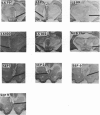Abstract
Rats with chronically implanted, bipolar electrodes in the septal and medial forebrain bundle areas, in addition to the region of the mammillary bodies of the posterior hypothalamus, were trained to press a permanently mounted lever in order to produce a second, retractable lever. Rewarding brain stimulation was programmed on the retractable lever; following completion of the programmed number of CRF response-stimulations, that lever was retracted from the box. Responding on the permanent lever could reintroduce the retractable lever. Fixed interval, fixed ratio, DRL, and variable interval schedules were programmed on the permanent lever in the range of schedule parameters often used with conventional reinforcers. Typical effects are described, and it is concluded that there are no striking differences between brain-stimulation reinforcement and the conventional reinforcers.
Full text
PDF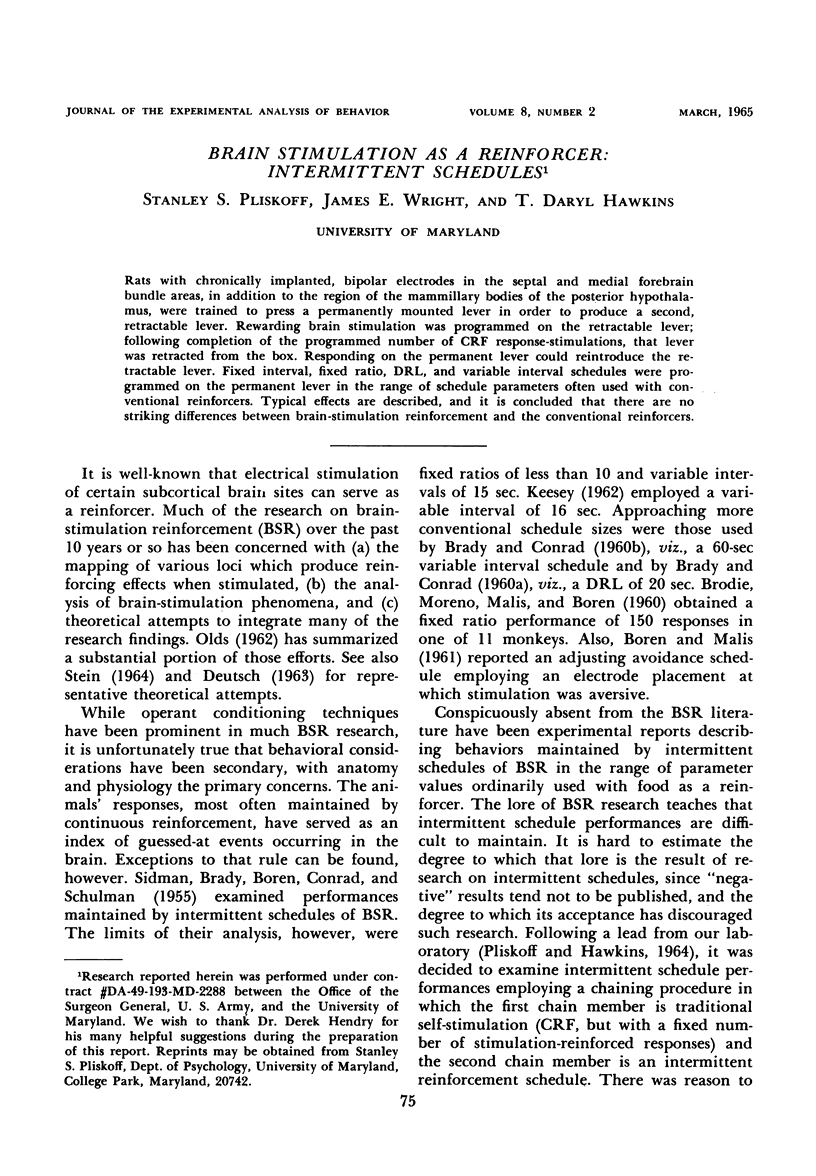
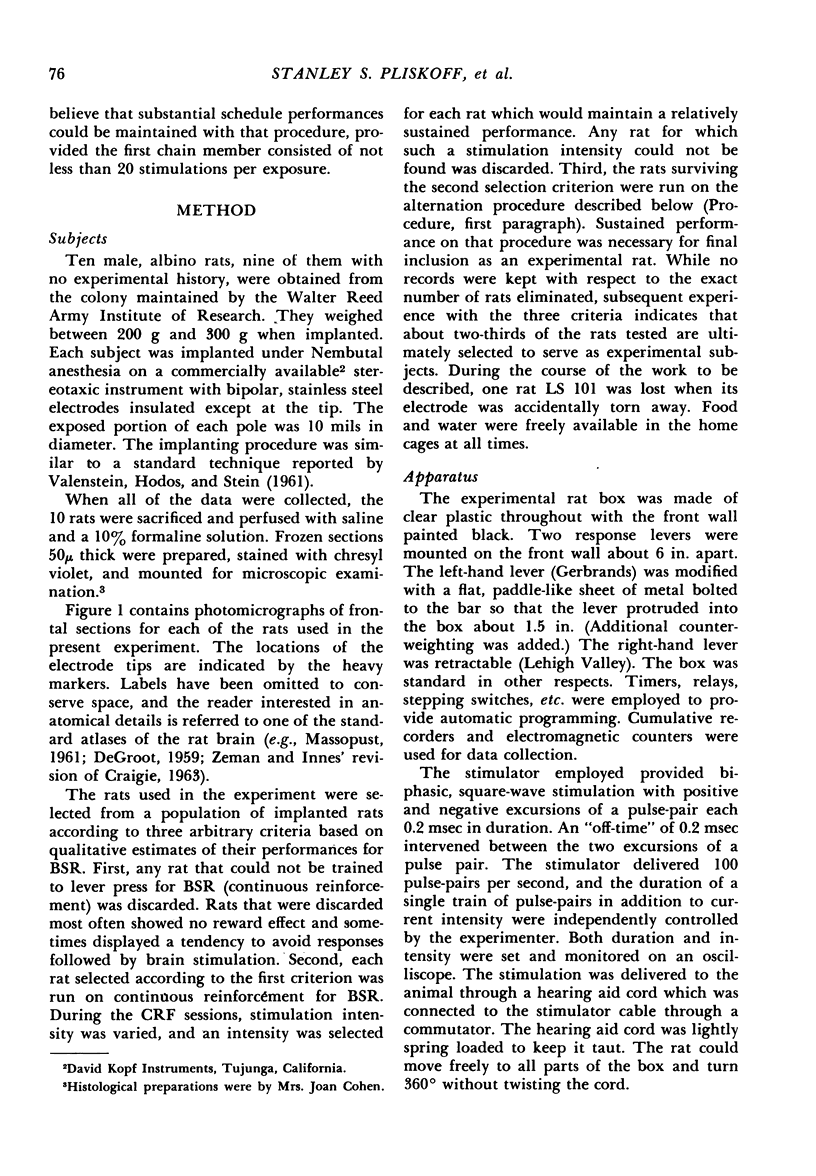
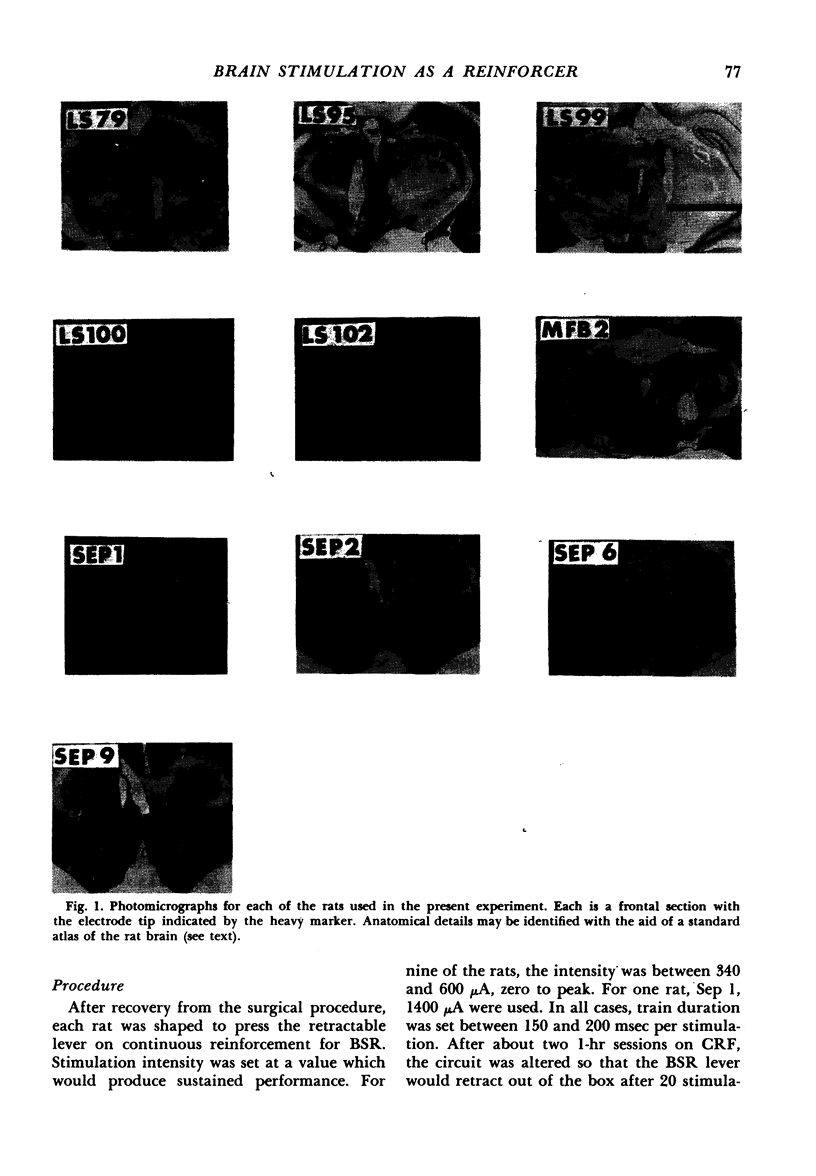
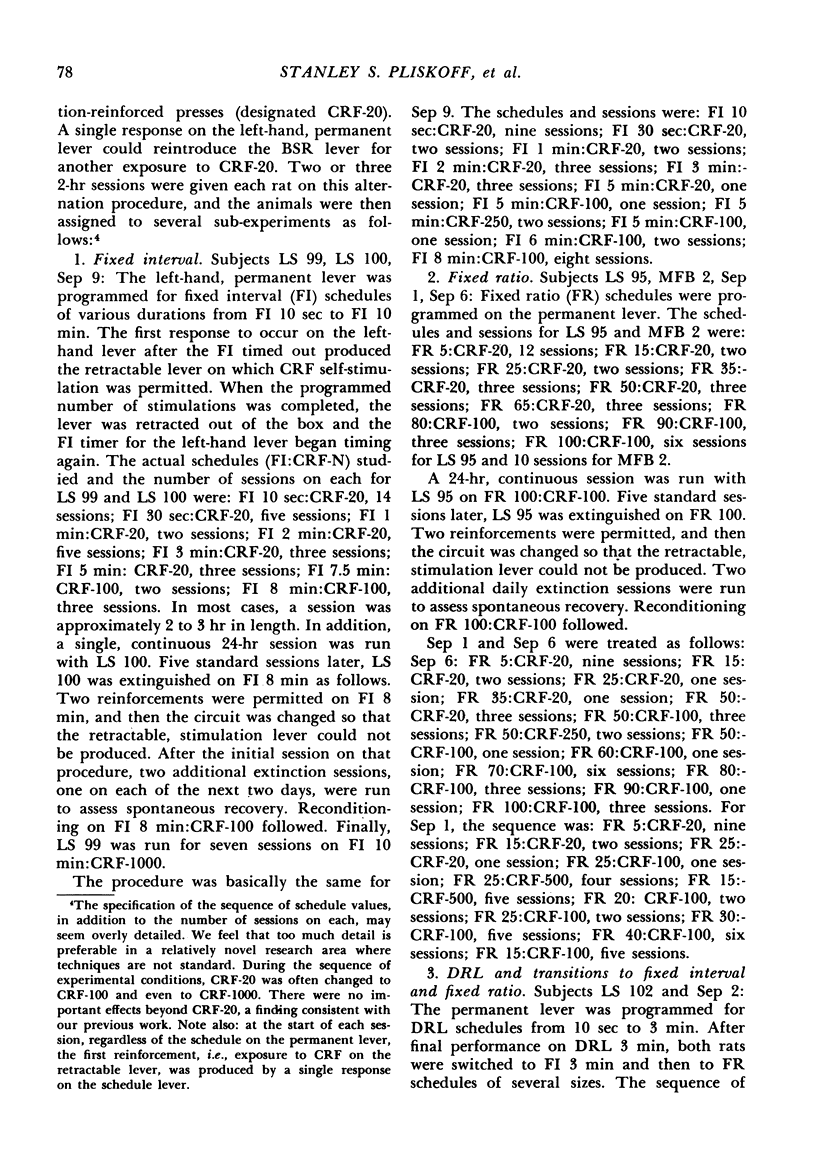
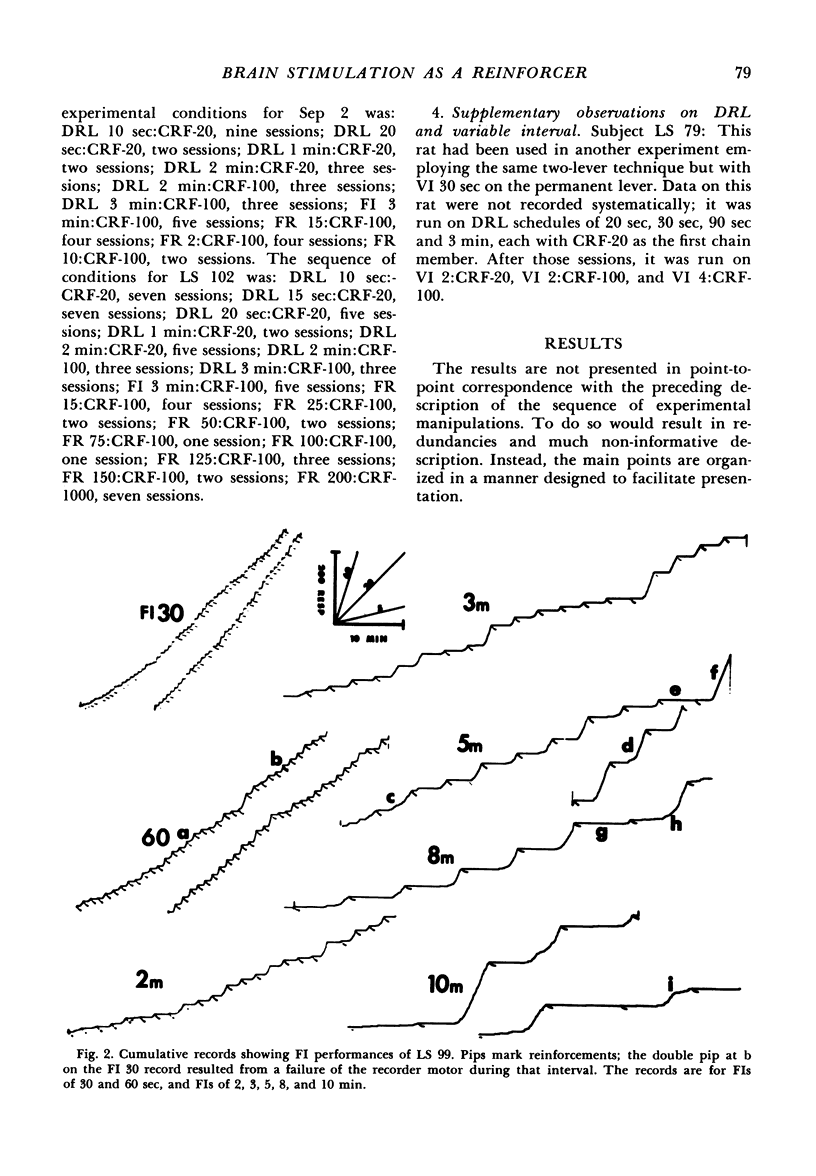
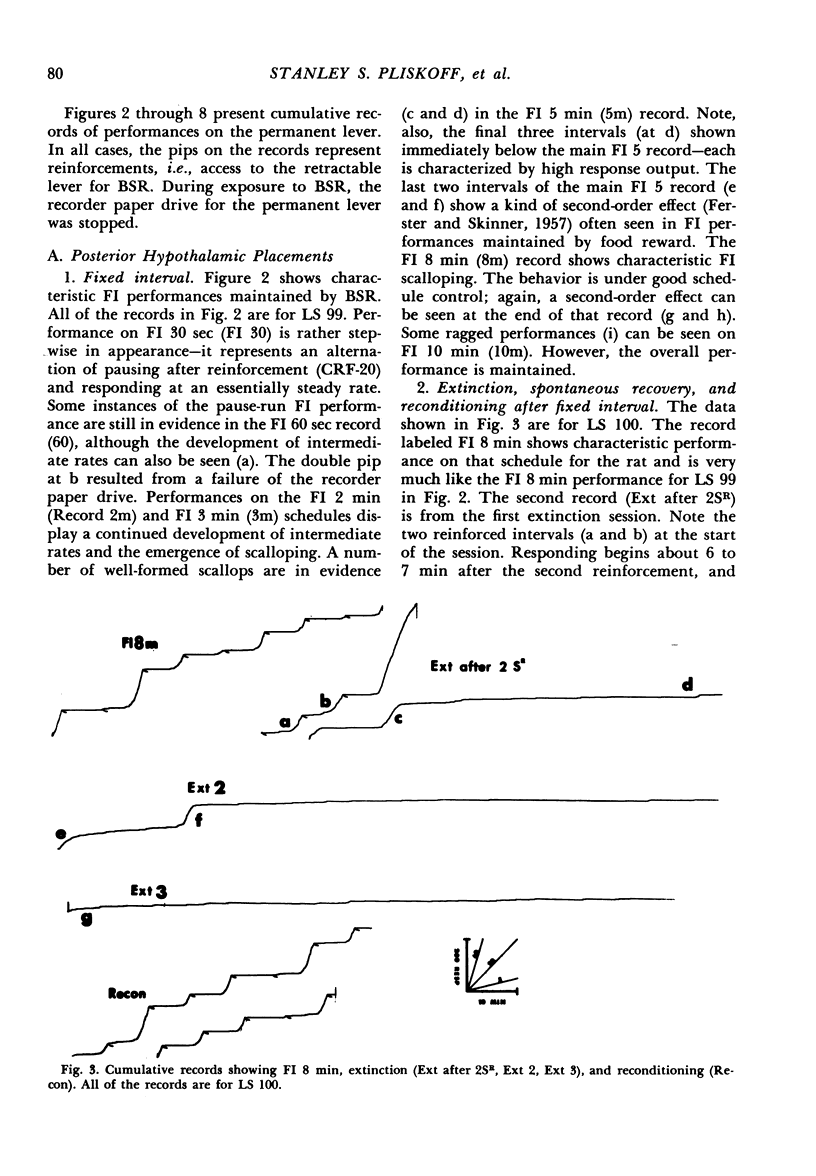
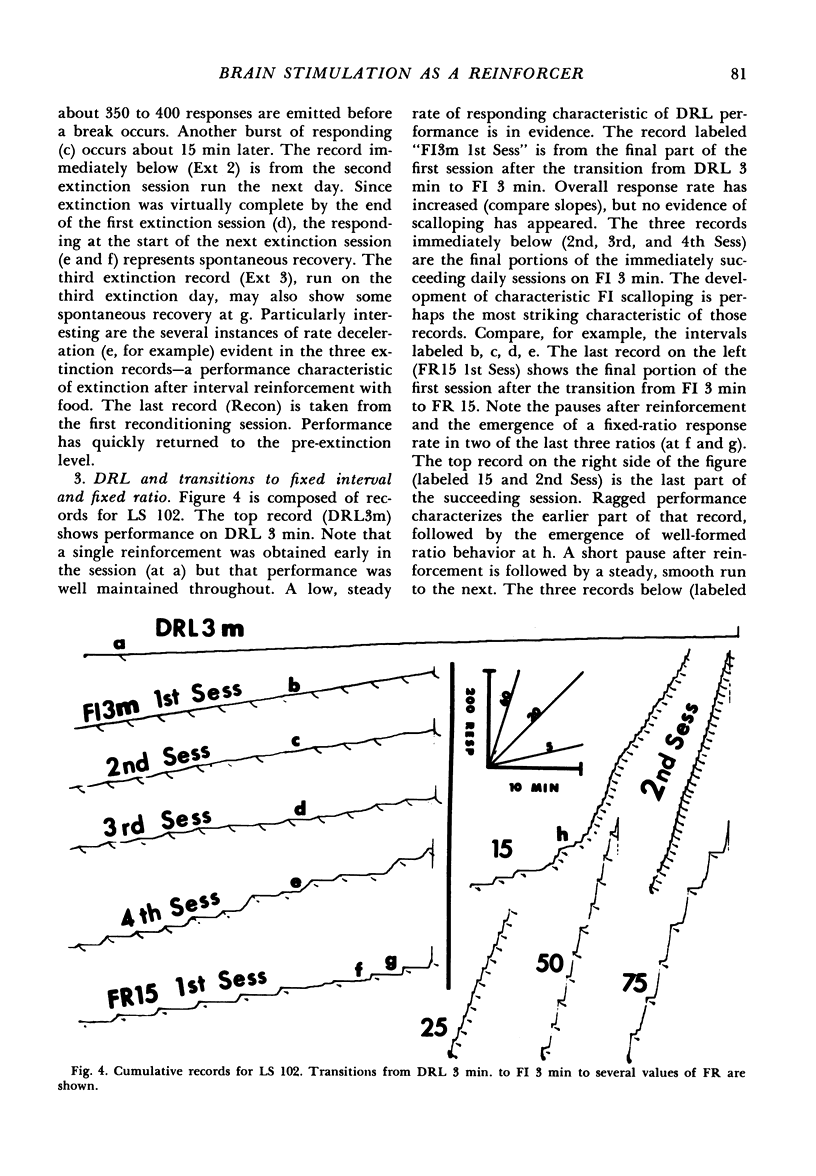
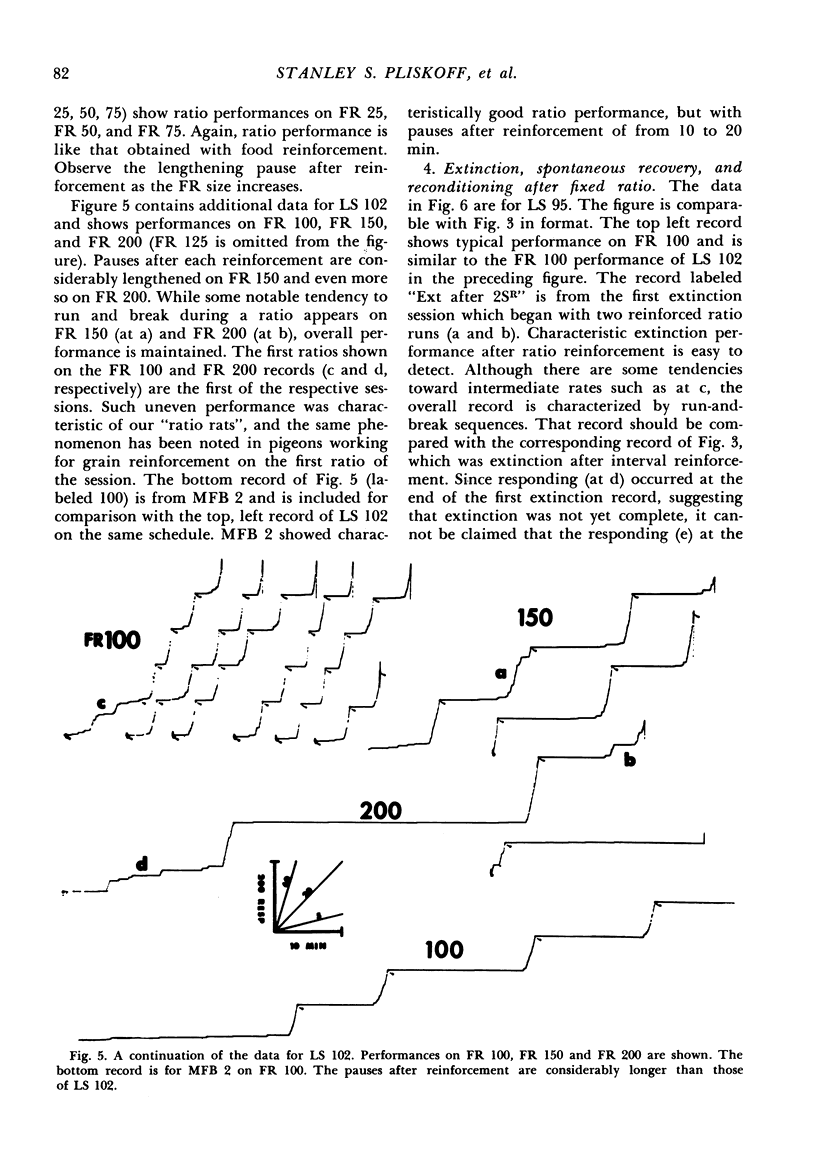
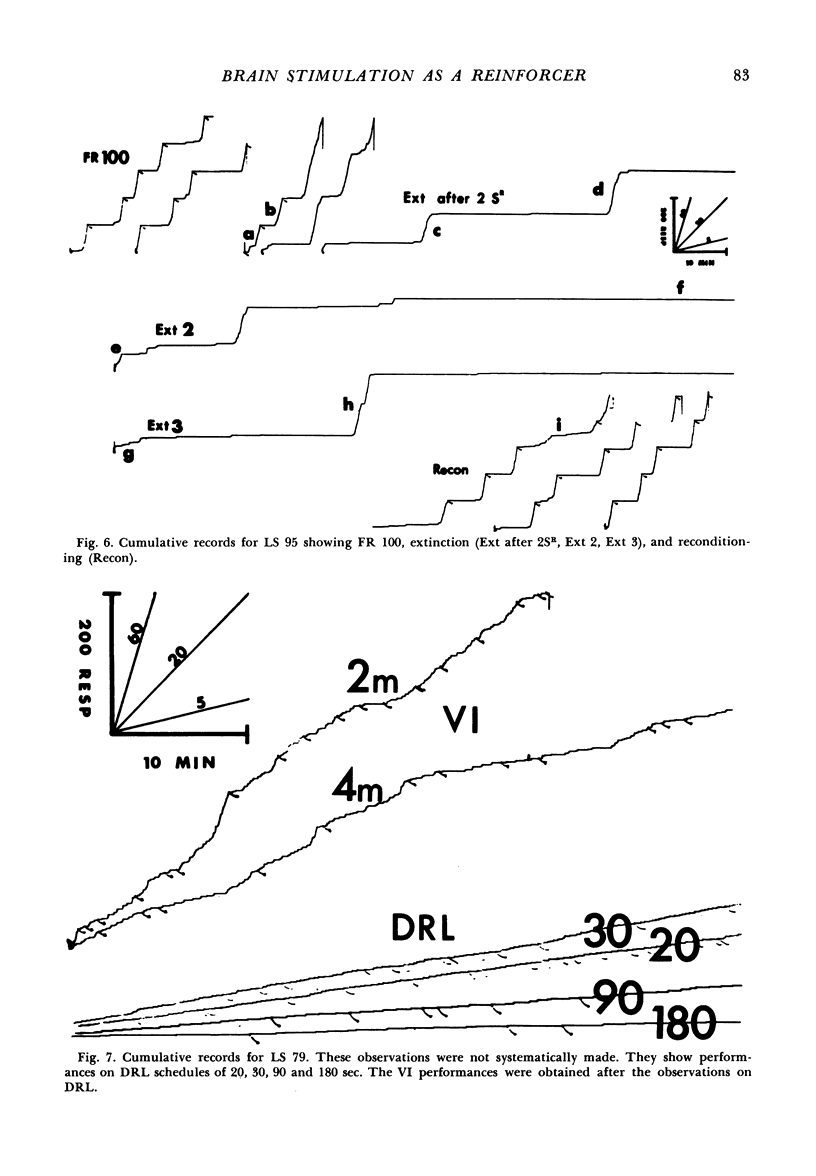
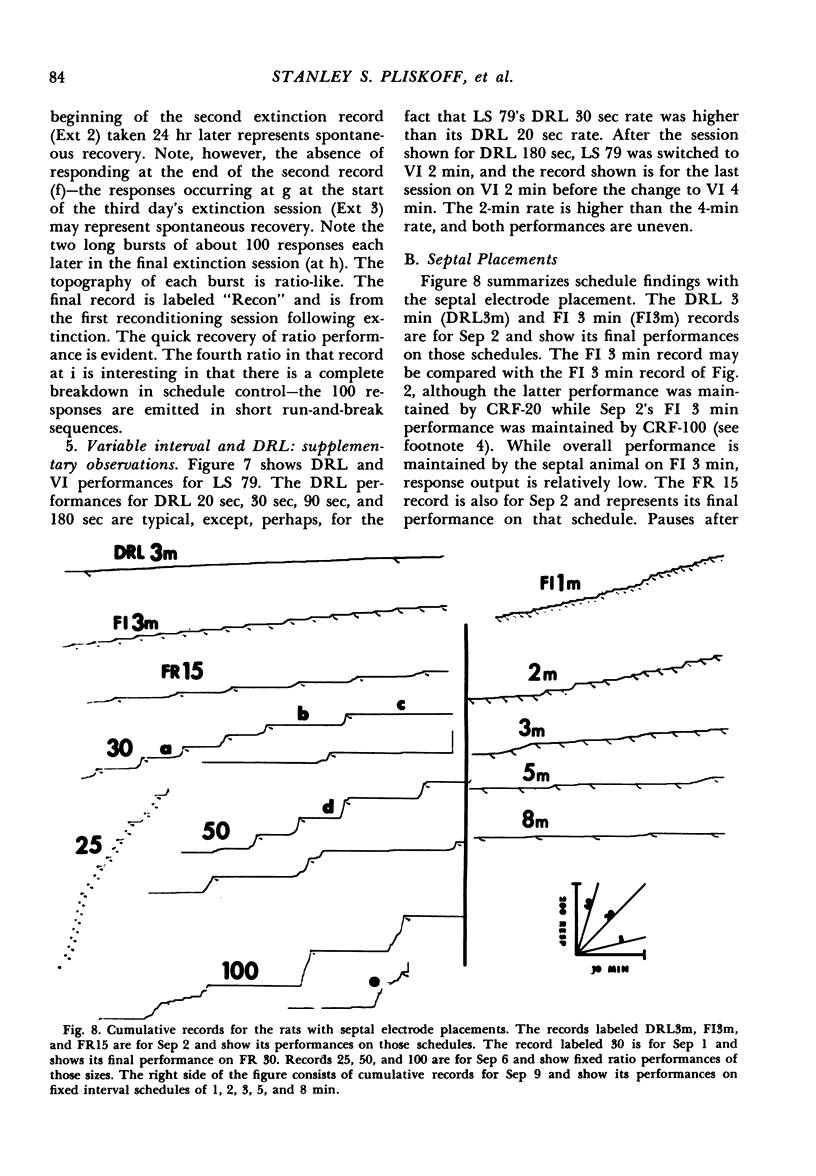
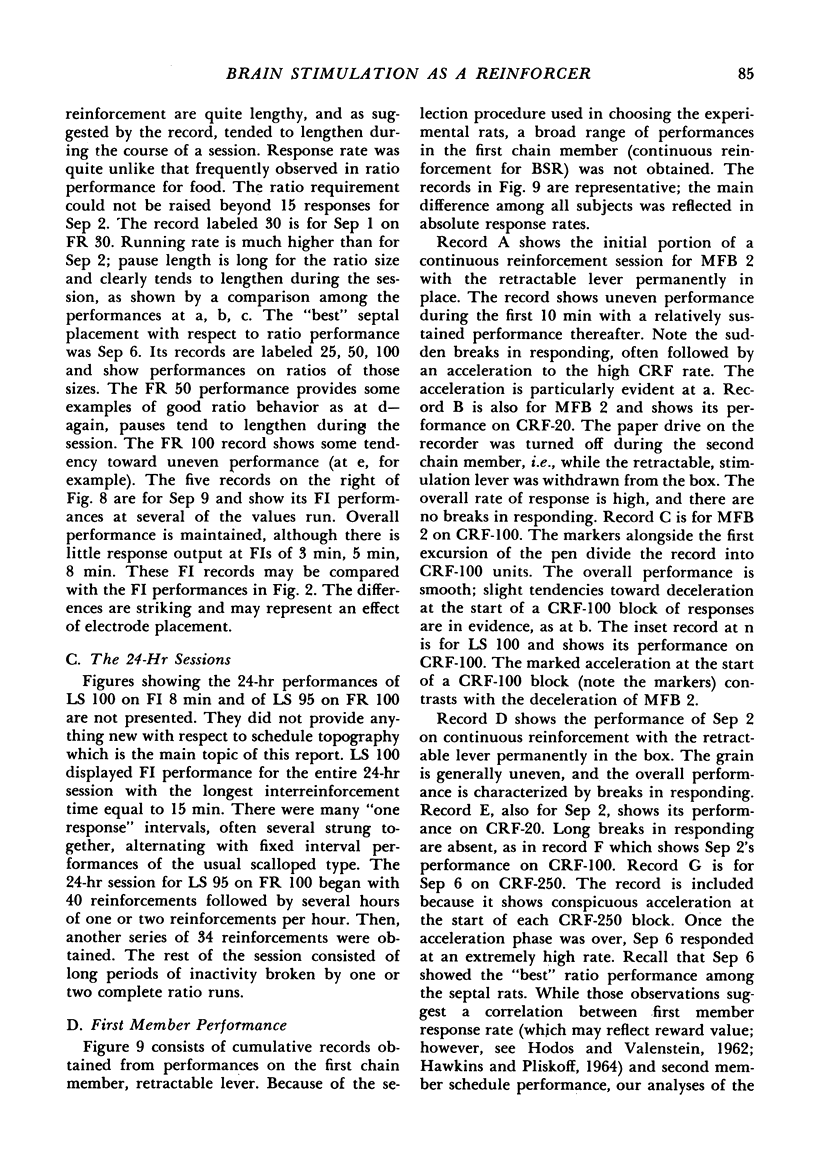
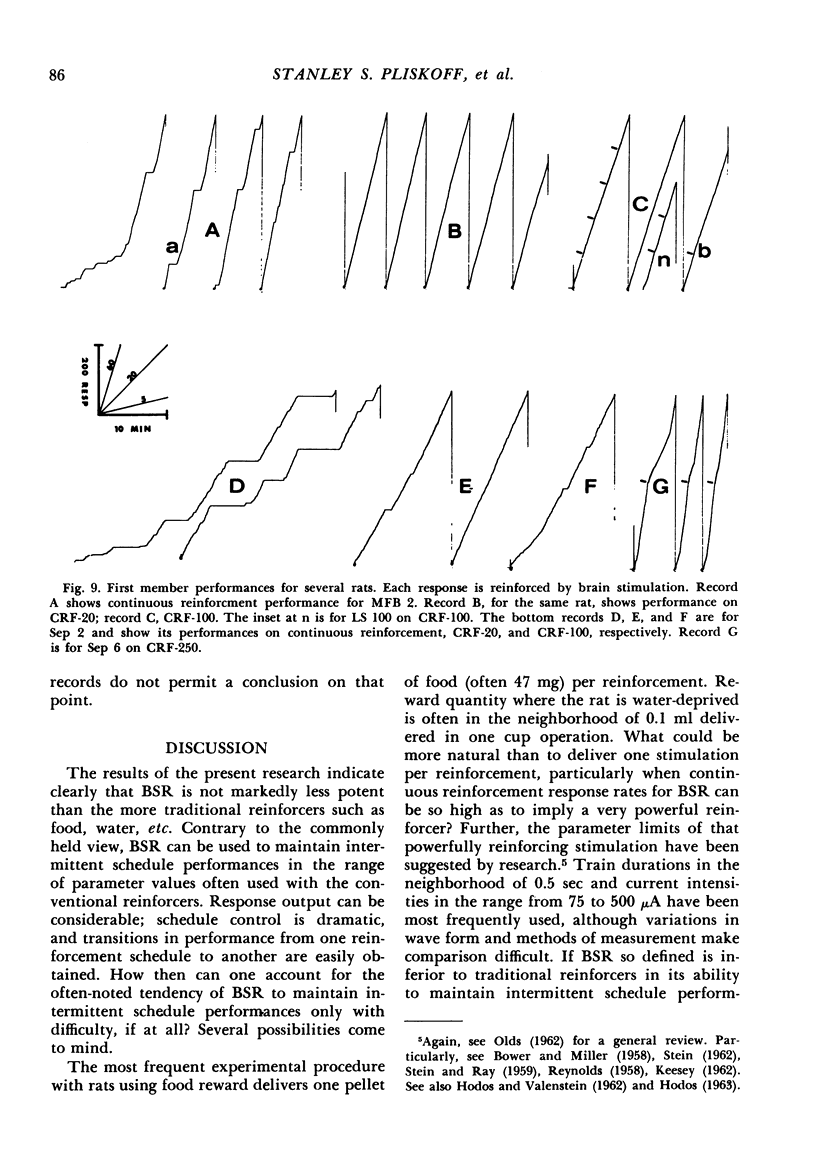
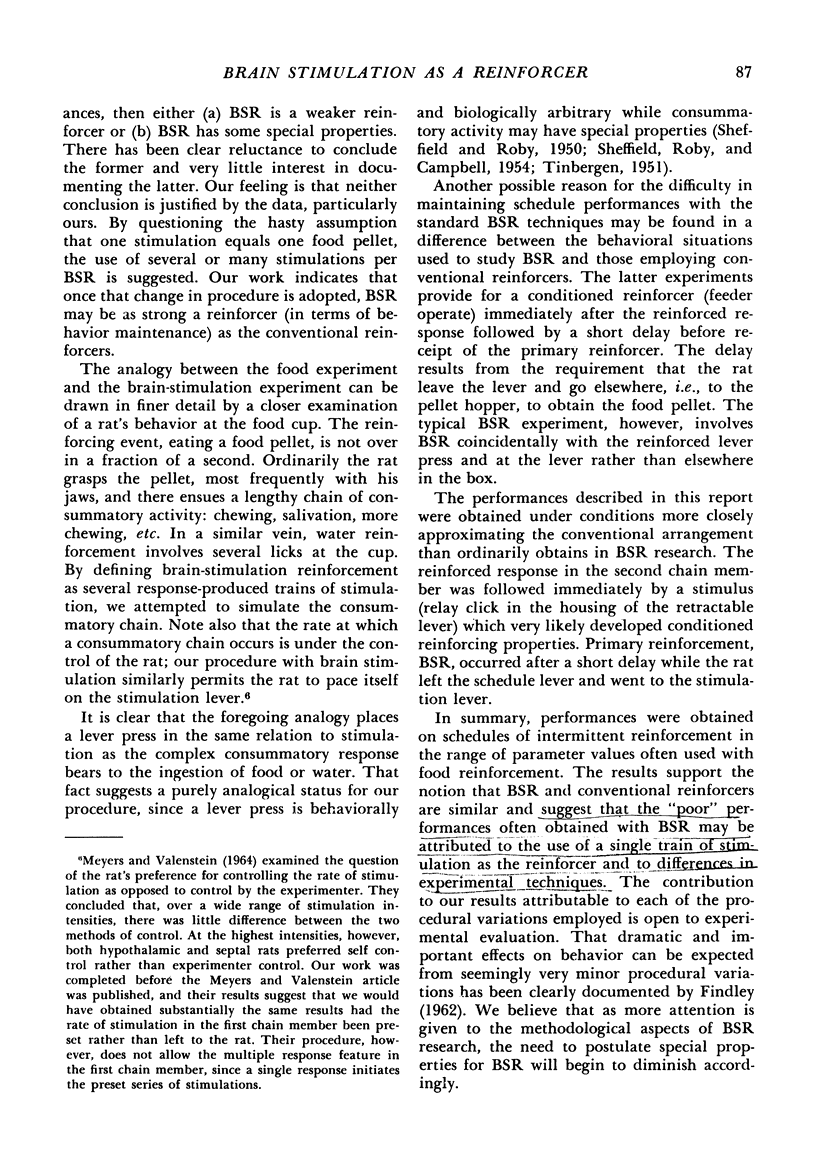
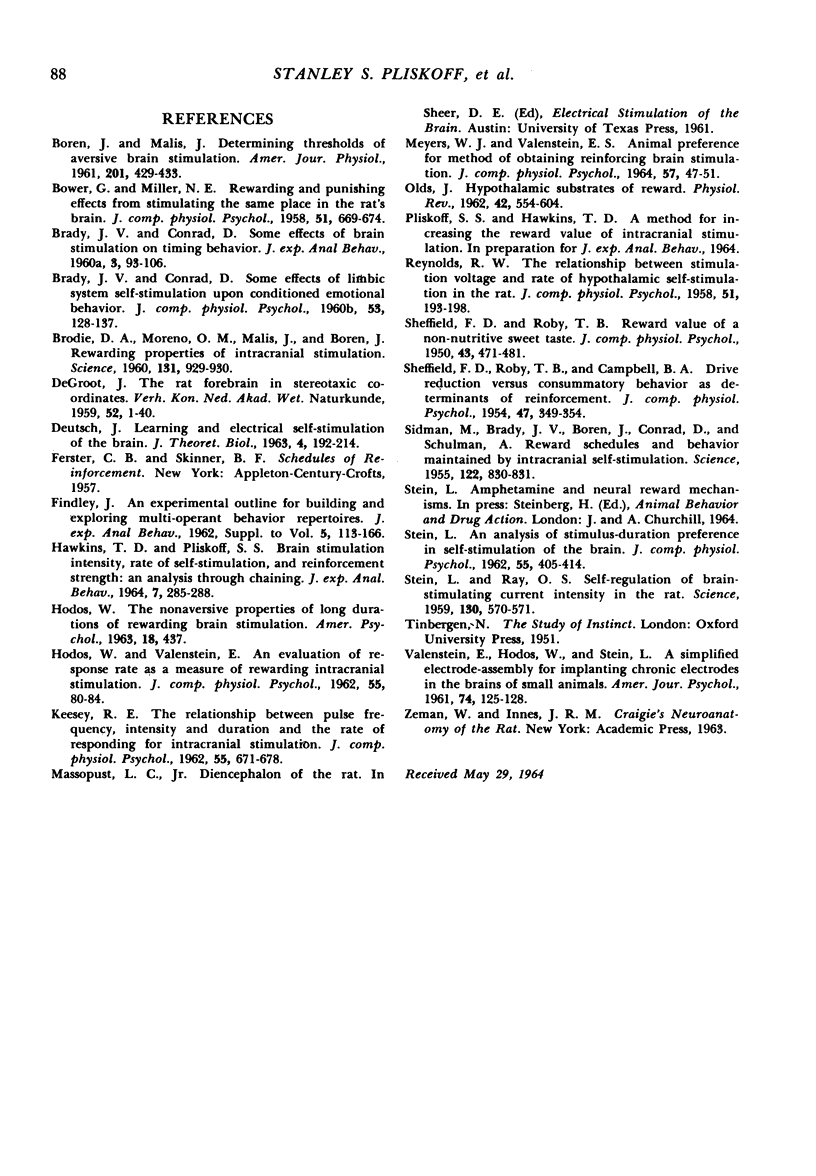
Images in this article
Selected References
These references are in PubMed. This may not be the complete list of references from this article.
- BOWER G. H., MILLER N. E. Rewarding and punishing effects from stimulating the same place in the rat's brain. J Comp Physiol Psychol. 1958 Dec;51(6):669–674. doi: 10.1037/h0038925. [DOI] [PubMed] [Google Scholar]
- BRADY J. V., CONRAD D. G. Some effects of brain stimulation on timing behavior. J Exp Anal Behav. 1960 Apr;3:93–106. doi: 10.1901/jeab.1960.3-93. [DOI] [PMC free article] [PubMed] [Google Scholar]
- BRADY J. V., CONRAD D. G. Some effects of limbic system selfstimulation upon conditioned emotional behavior. J Comp Physiol Psychol. 1960 Apr;53:128–137. doi: 10.1037/h0040827. [DOI] [PubMed] [Google Scholar]
- BRODIE D. A., MORENO O. M., MALIS J. L., BOREN J. J. Rewarding properties of intracranial stimulation. Science. 1960 Mar 25;131(3404):929–930. doi: 10.1126/science.131.3404.929-a. [DOI] [PubMed] [Google Scholar]
- Deutsch J. A. Learning and electrical self-stimulation of the brain. J Theor Biol. 1963 Mar;4(2):193–214. doi: 10.1016/0022-5193(63)90028-6. [DOI] [PubMed] [Google Scholar]
- FINDLEY J. D. An experimental outline for building and exploring multi-operant behavior repertoires. J Exp Anal Behav. 1962 Jan;5(Suppl):113–166. doi: 10.1901/jeab.1962.5-s113. [DOI] [PMC free article] [PubMed] [Google Scholar]
- HAWKINS T. D., PLISKOFF S. S. BRAIN-STIMULATION INTENSITY, RATE OF SELF-STIMULATION, AND REINFORCEMENT STRENGTH: AN ANALYSIS THROUGH CHAINING. J Exp Anal Behav. 1964 Jul;7:285–288. doi: 10.1901/jeab.1964.7-285. [DOI] [PMC free article] [PubMed] [Google Scholar]
- HODOS W., VALENSTEIN E. S. An evaluation of response rate as a measure of rewarding intracranial stimulation. J Comp Physiol Psychol. 1962 Feb;55:80–84. doi: 10.1037/h0047681. [DOI] [PubMed] [Google Scholar]
- KEESEY R. E. The relation between pulse frequency, intensity, and duration and the rate of responding for intracranial stimulation. J Comp Physiol Psychol. 1962 Oct;55:671–678. doi: 10.1037/h0049222. [DOI] [PubMed] [Google Scholar]
- MEYERS W. J., VALENSTEIN E. S. ANIMAL PREFERENCE FOR METHOD OF OBTAINING REINFORCING BRAIN STIMULATION. J Comp Physiol Psychol. 1964 Feb;57:47–51. doi: 10.1037/h0044039. [DOI] [PubMed] [Google Scholar]
- OLDS J. Hypothalamic substrates of reward. Physiol Rev. 1962 Oct;42:554–604. doi: 10.1152/physrev.1962.42.4.554. [DOI] [PubMed] [Google Scholar]
- REYNOLDS R. W. The relationship between stimulation voltage and rate of hypothalamic self-stimulation in the rat. J Comp Physiol Psychol. 1958 Apr;51(2):193–198. doi: 10.1037/h0048362. [DOI] [PubMed] [Google Scholar]
- SHEFFIELD F. D., ROBY T. B., CAMPBELL B. A. Drive reduction versus consummatory behavior as determinants of reinforcement. J Comp Physiol Psychol. 1954 Oct;47(5):349–354. doi: 10.1037/h0054471. [DOI] [PubMed] [Google Scholar]
- SHEFFIELD F. D., ROBY T. B. Reward value of a non-nutritive sweet-taste. J Comp Physiol Psychol. 1950 Dec;43(6):471–481. doi: 10.1037/h0061365. [DOI] [PubMed] [Google Scholar]
- SIDMAN M., BRADY J. V., BOREN J. J., CONRAD D. G., SCHULMAN A. Reward schedules and behavior maintained by intracranial self-stimulation. Science. 1955 Oct 28;122(3174):830–831. doi: 10.1126/science.122.3174.830. [DOI] [PubMed] [Google Scholar]
- STEIN L. An analysis of stimulus-duration preference in self-stimulation of the brain. J Comp Physiol Psychol. 1962;55:405–414. doi: 10.1037/h0040878. [DOI] [PubMed] [Google Scholar]
- STEIN L., RAY O. S. Self-regulation of brain-stimulating current intensity in the rat. Science. 1959 Sep 4;130(3375):570–572. doi: 10.1126/science.130.3375.570. [DOI] [PubMed] [Google Scholar]
- VALENSTEIN E. S., HODOS W., STEIN L. A simplified electrode-assembly for implanting chronic electrodes in the brains of small animals. Am J Psychol. 1961 Mar;74:125–128. [PubMed] [Google Scholar]



